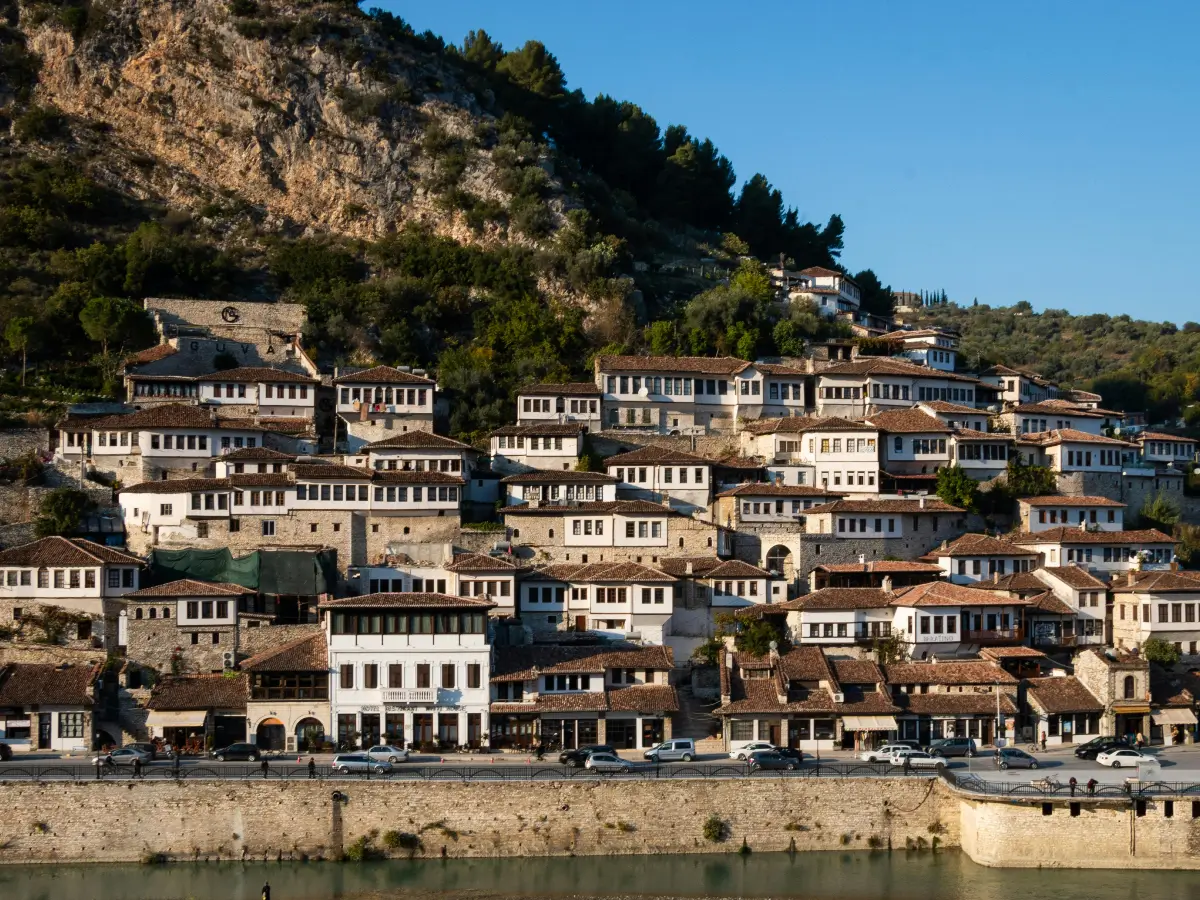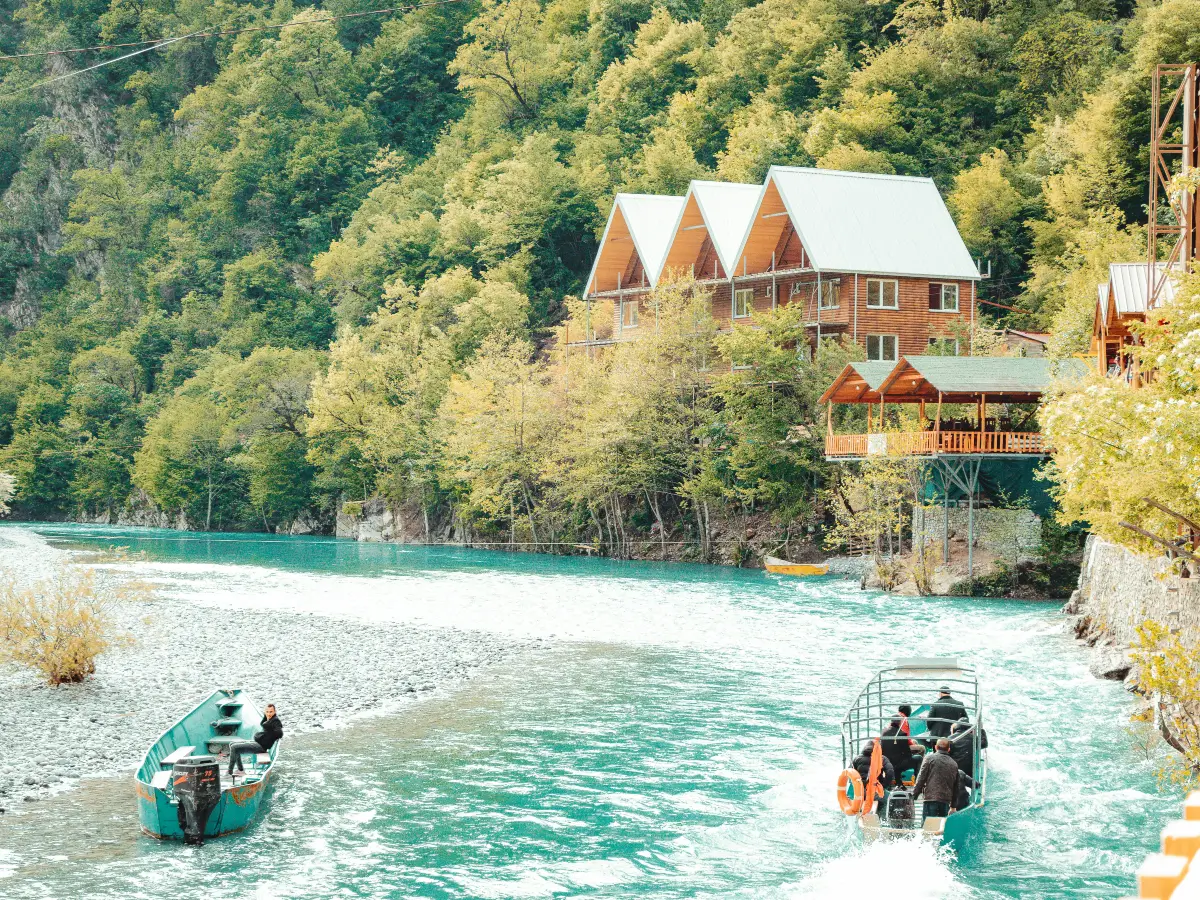Rivers are some of the most vital lifelines of Albania. They cross through mountains, valleys, and fertile plains, shaping not just the country’s landscape, but also its history, agriculture, and energy production. In a country defined by its rugged terrain and strong connection to nature, rivers have long played a central role in daily life — from powering homes to irrigating crops and defining borders.
Albania may be small in size, but it is home to several major rivers that remain crucial to its identity and development.

The most important rivers in Albania
Albania has more than 150 rivers, but several stand out for their length, ecological value, and national significance. These include:
-
Drin River – The longest river in Albania, formed by two branches: the Black Drin and White Drin. It flows through northern Albania and powers major hydropower plants that produce a significant share of the country’s electricity.
-
Vjosa River – One of the last wild rivers in Europe, the Vjosa flows freely from the mountains of Greece to the Adriatic Sea. It is a symbol of untouched nature and a source of national pride.
-
Shkumbin River – Flowing from the east to the west, this river has historically divided the country’s dialect zones — Gheg in the north and Tosk in the south.
-
Mati River – Originating in the mountainous region northeast of Tirana, the Mati plays a role in agriculture and energy generation.
-
Semani River – Formed by the Osum and Devoll rivers, it crosses central Albania and supports irrigation in one of the country’s most productive farming regions.
-
Buna River – A short but important river that connects Lake Shkodra to the Adriatic Sea. It also forms part of Albania’s natural border with Montenegro.
Each of these rivers not only supports human activity but also contributes to Albania’s ecological balance and biodiversity.
Rivers and their impact on energy
Albania’s rivers are the backbone of its renewable energy system. The country produces most of its electricity from hydropower, with several large dams located on rivers like the Drin, Mati, and Devoll. These hydropower plants supply clean energy to homes and businesses across the country.
While hydropower is considered environmentally friendly, it also creates challenges. In years with low rainfall, electricity production drops significantly, leading to reliance on imports. Balancing river usage for energy and preserving their natural flow is an ongoing challenge for policymakers and developers.
Importance for agriculture and local economies
In rural areas, rivers serve as vital sources of irrigation. They allow local farmers to cultivate crops even in dry seasons and support the growth of fruits, vegetables, olives, and grains. Many villages and small towns are built along rivers, not just for access to water but for trade and mobility.

Fishing, both for consumption and as a small-scale industry, remains part of local economies in areas surrounding rivers like the Buna and Vjosa. These rivers also support tourism — especially eco-tourism — which has become a growing part of the national economy.
Environmental and cultural value
Beyond practical uses, rivers in Albania hold strong cultural and environmental value. The Vjosa River, for example, has become a symbol of Albania’s environmental movement. Its free-flowing nature, rich ecosystems, and scenic beauty have made it central to national debates about conservation and sustainable development.
Many Albanian myths, songs, and stories are tied to rivers. They are seen not just as physical features, but as living parts of the land — guardians of history and memory.
Protecting river systems for the future
As Albania continues to modernize, it faces pressure to balance development with environmental protection. River ecosystems are sensitive. Overuse, pollution, and poorly planned dams can damage natural habitats and disrupt the communities that depend on them.
There is growing awareness that rivers are more than just water sources — they are part of the national heritage. Preserving them means securing clean energy, food security, tourism potential, and environmental stability for generations to come.